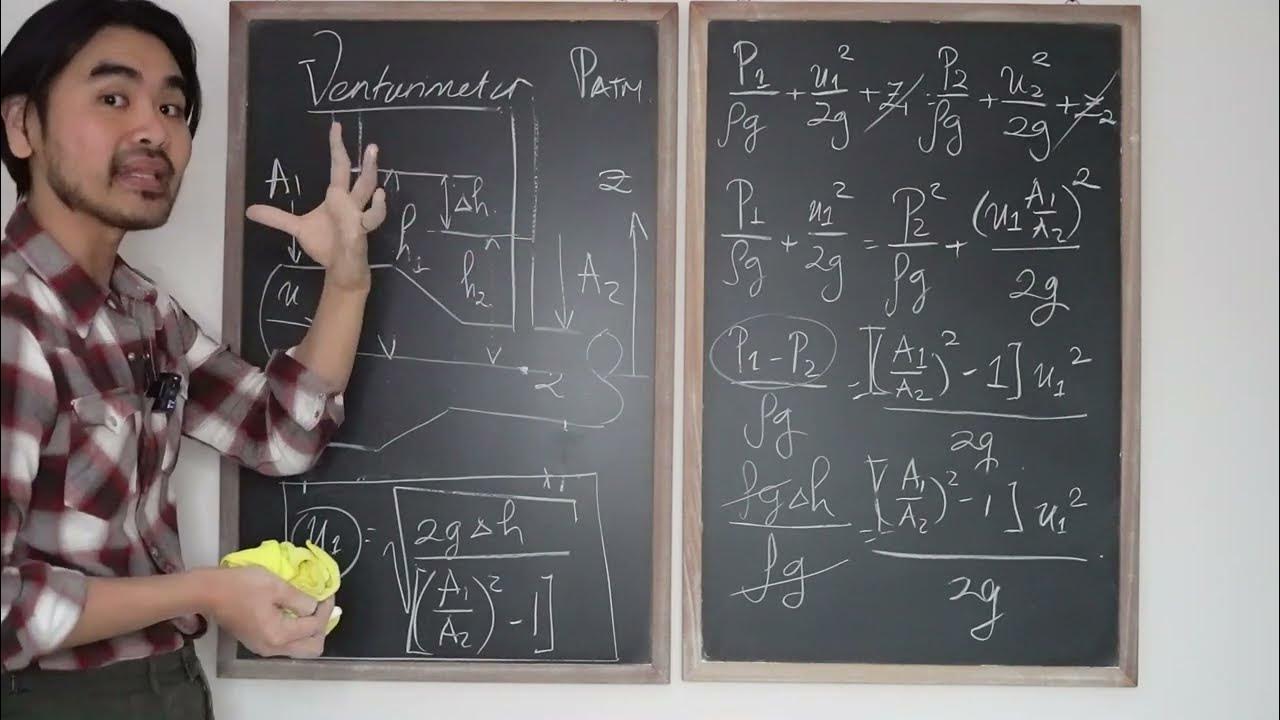HIDROSTÁTICA | PRESSÃO - Teoria, exercícios resolvidos e exemplos de aplicações
Summary
TLDRIn this lesson on pressure, the concept is explained using simple examples. Pressure is defined as the ratio of force to area, with units in newtons per square meter (Pascal). The video demonstrates how pressure is inversely proportional to contact area, showing how larger areas reduce pressure (like wide tires on a vehicle) and smaller areas increase pressure (as in a sharpened knife). Through practical examples like the nail bed experiment and a brick's pressure, the video helps viewers understand how pressure affects everyday objects. Additionally, it touches on atmospheric pressure, using a bottle experiment to illustrate the effects of external and internal pressure balance.
Takeaways
- 😀 Pressure is defined as the ratio of force to area, with the unit being Newtons per square meter (Pa).
- 😀 Pressure is a scalar quantity, meaning it only has magnitude and no direction.
- 😀 Pressure is inversely proportional to the area: as the contact area increases, pressure decreases and vice versa.
- 😀 A wide tire on a vehicle, for example, spreads the weight over a larger area, reducing pressure and preventing the vehicle from sinking into soft surfaces like sand.
- 😀 Sharpening a knife decreases the contact area, which increases pressure and makes it easier to cut.
- 😀 A person lying on a bed of nails experiences a reduced pressure due to the large number of nails distributing their weight over a larger area.
- 😀 Lying on a single nail would concentrate pressure in one small area, making it much higher and potentially harmful.
- 😀 The pressure exerted by an object can be calculated by dividing the force (in Newtons) by the contact area (in square meters).
- 😀 When a brick is laid flat, the pressure is lower due to a larger contact area, compared to when it's standing on a smaller face, concentrating the pressure.
- 😀 Atmospheric pressure is the force exerted by the weight of the air in the atmosphere, which is approximately 100,000 Newtons per square meter (100,000 Pa).
- 😀 Removing air from a container, such as a bottle, can cause it to collapse because the atmospheric pressure outside exceeds the internal pressure.
Q & A
What is pressure, as defined in the script?
-Pressure is the ratio between the force applied and the area over which the force is distributed. It is mathematically expressed as Pressure = Force / Area.
What are the units of pressure?
-The unit of pressure is the pascal (Pa), which is equivalent to 1 newton per square meter (N/m²).
Why is pressure considered a scalar quantity?
-Pressure is a scalar quantity because it only has magnitude, not direction. It is measured as a numerical value followed by its unit of measurement.
How does the area of contact affect pressure?
-Pressure is inversely proportional to the area of contact. When the area increases, pressure decreases, and vice versa.
How does the example of a car with wide tires help explain pressure?
-A car with wider tires has a larger contact area with the ground, which reduces pressure and prevents the vehicle from getting stuck in soft surfaces like sand or mud.
How does sharpening a knife illustrate the concept of pressure?
-Sharpening a knife reduces the contact area of the blade, which increases the pressure applied to the material being cut. This makes it easier to cut through the material.
What happens when a person lies on a bed of nails, according to the script?
-When a person lies on a bed of nails, their body weight is distributed across a large number of nails, increasing the contact area and thus reducing pressure. This is why the person does not get injured. However, if only one nail were used, the pressure would be very high, potentially causing injury.
How is pressure calculated in the example with a brick?
-In the first case, when the brick lies flat, the pressure is calculated by dividing the force (80 N) by the contact area (4 cm x 2 cm). The result is 10 N/m². In the second case, when the brick is standing, the contact area is smaller (2 cm x 2 cm), resulting in a pressure of 40 N/m².
What is atmospheric pressure, and how is it related to the force exerted by air?
-Atmospheric pressure is the force exerted by the weight of the air in the Earth's atmosphere. It is calculated as the force of air divided by the area of the Earth, with a typical value of approximately 100,000 pascals.
Why does a vacuum inside a bottle cause it to collapse when exposed to external pressure?
-When the air inside the bottle is removed, there is no longer any opposing pressure inside to balance the external atmospheric pressure. The external pressure compresses the bottle, causing it to deform and collapse.
Outlines

This section is available to paid users only. Please upgrade to access this part.
Upgrade NowMindmap

This section is available to paid users only. Please upgrade to access this part.
Upgrade NowKeywords

This section is available to paid users only. Please upgrade to access this part.
Upgrade NowHighlights

This section is available to paid users only. Please upgrade to access this part.
Upgrade NowTranscripts

This section is available to paid users only. Please upgrade to access this part.
Upgrade NowBrowse More Related Video

Hidrostática (Conceito de Pressão) - Aula 01

KESETIMBANGAN KIMIA KELAS 11_PART 1

Materi Tekanan Pada Zat Padat Kelas 8 SMP

CHAPTER V (Everybody is always in the middle of something🤔)- Bahasa Inggris SMP Kelas IX Semester 1

Mekanika Fluida FM01 (Lecture3: 6/8). Venturimeter - Aplikasi persamaan Bernoulli

FISIKA KELAS 11 | BAB 3 FLUIDA STATIS | TEGANGAN PERMUKAAN
5.0 / 5 (0 votes)